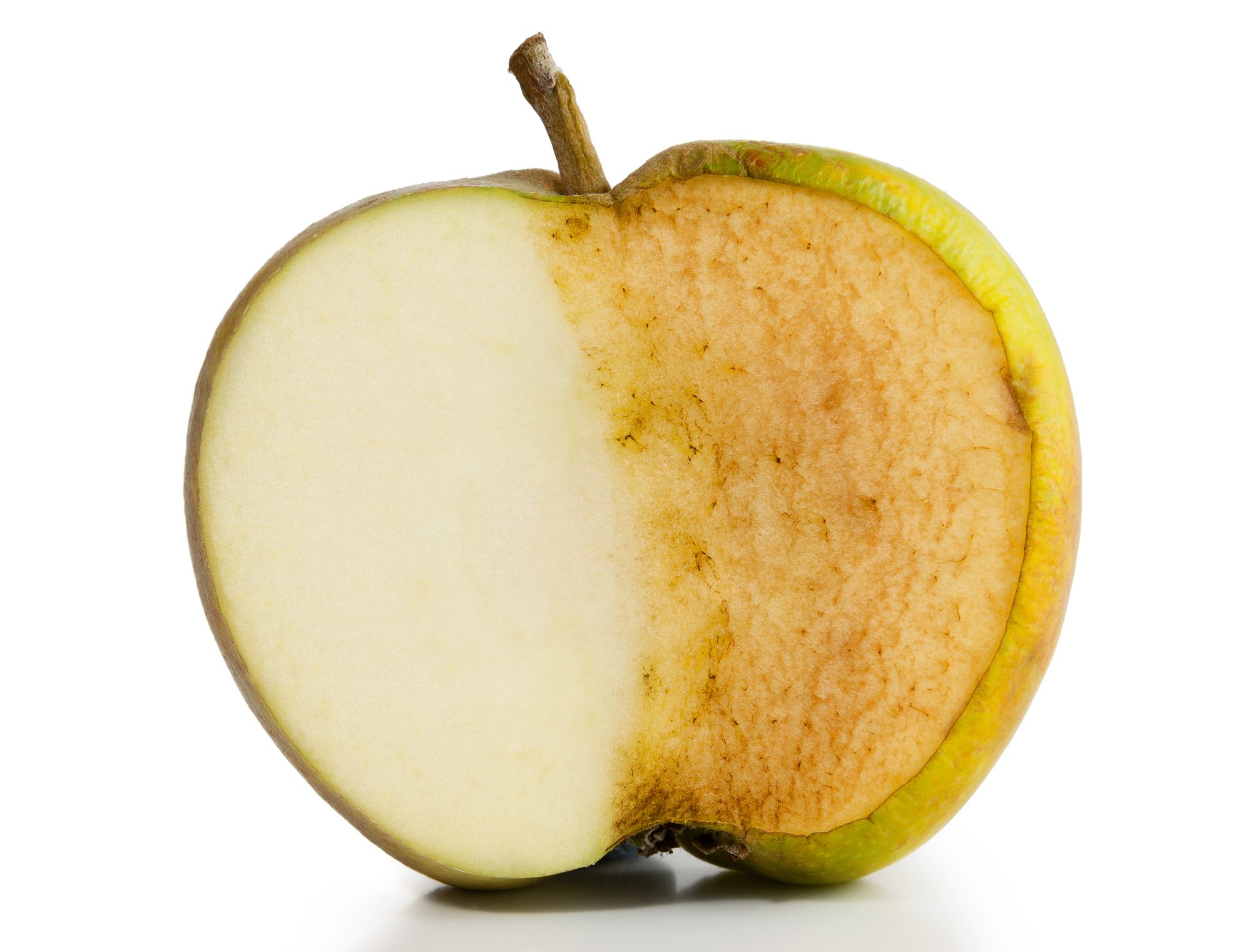Here’s The Best Way To Prevent Cut Apples From Turning Brown
Cut apples turn an unsightly shade of brown when exposed to air because of a chemical reaction. Fortunately, there are numerous ways to stop the natural phenomenon. Read on for a close look at the cause of this browning as well as handy tricks that will help you prevent it everytime.
;)
Apples, alongside a few other fruits like pears and bananas, have a tendency to brown quickly once the skin is damaged and exposes the inner flesh to air. This reaction is simply called oxidation.
Apples contain large quantities of polyphenol oxidase, an enzyme that can oxidize polyphenols, molecules that play a variety of roles in plants, including preventing infections and giving them their pigments.
Polyphenol oxidase and the polyphenols themselves are stored in separate areas of the plant's cells, but the cells become damaged when the internal flesh of the apple is exposed through a cut or bruise. After the damage, the polyphenol oxidase comes into close contact with the substrate.
With the help of oxygen, which is in the surrounding air, the polyphenol oxidase initiates a series of chemical reactions, transforming the polyphenols and eventually producing melanins—brown pigments.
The scientific term for this process is "enzymatic browning." Although it's a natural process, the process also alters the flavor, scent, and nutritional value of the apple.

How to Prevent Browning in Apples
The easiest way to prevent browning is by:
- Blocking the oxygen
- Reversing the oxidation reaction
- Changing the pH of the environment, or
- Stopping the reaction through exposure to either high or low temperatures.
Therefore, here's an abridged guide to preventing browning quickly:
- Make a saltwater solution by mixing half a teaspoon of kosher salt per cup of water
- Soak the cut fruit in the solution for 10 minutes
- Drain and store the apples until ready to use.
- If you don't like the mild saltiness, you can rinse the apples before serving. Even after rinsing, the browning remains effectively reduced.

How to Use Water, Lemon Juice, and Citric Acid to Prevent Apples From Browning
1. Water: You can prevent browning by submerging the sliced fruit in plain water, reducing its exposure to air. Simply:
- Submerge the sliced fruit in plain water, reducing its exposure to air. Since a lot of fruits float, it helps to either lay a clean paper towel on top, which, once wet, will push them under, or to put them in zipper-lock bags with the air pressed out. I did the latter, since it's easier to see the apple slices in the photos that way.
2. Citrus Fruits: they contain ascorbic acid, which can lower the pH and also reverse the oxidation reaction through a process chemists call reduction. To use lemon juice and citric acid, simply:
- Squeeze about 3 tablespoons of lemon juice into 1 quart of water to acidulate it.
- Submerge the apples in the solution or sprinkle some on their cut surfaces. However, don't let the apples sit for longer than 1 minute in the solution
- Avoid rubbing a cut lemon on the apples as it compromised the flavor of the apples.
3. Citric Acid: If you'll use citric acid, mix it with water first to make a solution to submerge the apples in. Rubbing the powder onto the surface of the cut apples impacts the flavor of the apples.
;Resize,width=767;)
;Resize,width=712;)

;Resize,width=712;)
